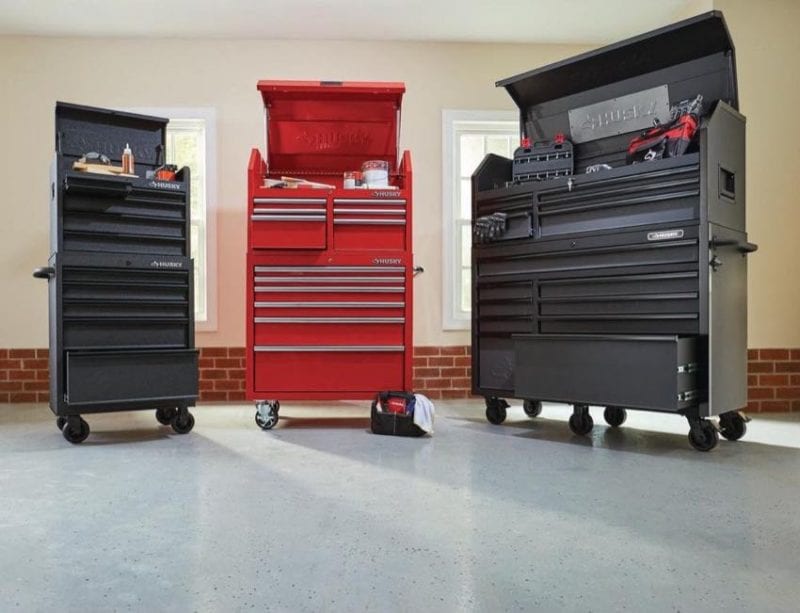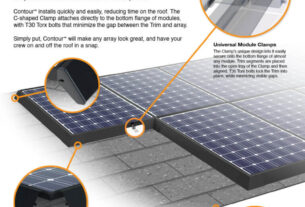Tool carts are essential in any workshop, garage, or industrial setting. They make it easy to organize your tools and keep them within arm’s reach while working on a project. However, the wheels of a tool cart are just as important as the cart itself. Without the right wheels, your tool cart will be difficult to move around and may even cause damage to your floors or work surfaces. That’s why it’s important to choose the best tool cart wheels that suit your needs.
In this article, we’ll discuss everything you need to know about tool cart wheels – from their types and materials to their load capacity and installation process. We’ll also give you some tips on how to maintain your tool cart wheels and prolong their lifespan. So, if you want to upgrade your tool cart with new wheels or replace old ones, read on!
The Different Types of Tool Cart Wheels
There are several types of tool cart wheels available in the market today. Each type has its own advantages and disadvantages based on its design, materials, and construction. Here are the most common types of tool cart wheels:
1. Swivel Casters
Swivel casters are one of the most popular types of tool cart wheels. They have a 360-degree rotation that allows the wheel to turn in any direction without changing its orientation. Swivel casters typically have two mounting plates – one for attaching to the bottom of the tool cart and another for attaching to the wheel itself.
Advantages: Swivel casters provide excellent maneuverability and flexibility when moving your tool cart around tight spaces or corners. They can also absorb shock and vibration, making them ideal for heavy-duty applications.
Disadvantages: Swivel casters tend to be more expensive than other types of tool cart wheels due to their complex design. They may also require more maintenance than fixed casters as they have more moving parts that can wear out over time.
2. Fixed Casters
Fixed casters are another popular type of tool cart wheels. They have a rigid construction that allows the wheel to move only in a straight line without any rotation or swivel. Fixed casters typically have a single mounting plate for attaching to the cart and do not require any additional hardware.
Advantages: Fixed casters are generally less expensive than swivel casters and require less maintenance due to their simple design. They also provide better stability and support when carrying heavy loads as they do not swivel or shift during movement.
Disadvantages: Fixed casters can be difficult to maneuver around tight spaces or corners. They may also cause damage to your floors or work surfaces if not properly installed or maintained.
3. Pneumatic Wheels
Pneumatic wheels are made of rubber or plastic and filled with air like a bicycle tire. They are ideal for outdoor use, rough terrain, or uneven surfaces as they can absorb shock and provide better traction than other types of tool cart wheels.
Advantages: Pneumatic wheels provide excellent cushioning and shock absorption, making them ideal for heavy-duty applications or outdoor use. They also require less maintenance than solid rubber wheels as they can self-heal small punctures or leaks.
Disadvantages: Pneumatic wheels tend to be more expensive than other types of tool cart wheels due to their specialized design. They may also require more frequent replacement if used on rough terrain or exposed to extreme temperatures.
4. Solid Rubber Wheels
Solid rubber wheels are made of solid rubber or plastic and do not contain any air pockets. They are ideal for indoor use, smooth surfaces, or light-duty applications as they provide good traction and stability without being too heavy.
Advantages: Solid rubber wheels are generally less expensive than pneumatic wheels and require minimal maintenance due to their simple design. They also provide good traction and stability on smooth surfaces, making them ideal for indoor use.
Disadvantages: Solid rubber wheels can be noisy and bumpy when moving over rough or uneven surfaces. They may also cause damage to your floors or work surfaces if not properly installed or maintained.
The Different Materials of Tool Cart Wheels
In addition to their types, tool cart wheels are also made of different materials that affect their durability, load capacity, and resistance to wear and tear. Here are the most common materials used in tool cart wheels:
1. Polyurethane
Polyurethane is a synthetic material that is known for its excellent durability and shock absorption. Polyurethane wheels are ideal for heavy-duty applications or outdoor use as they can withstand extreme temperatures, chemicals, and UV radiation. They also provide good traction on both smooth and rough surfaces without leaving marks or scratches.
2. Rubber
Rubber is a natural material that is known for its elasticity and flexibility. Rubber wheels are ideal for indoor use or light-duty applications as they provide good traction and cushioning without being too heavy. They also absorb shock and vibration, making them quiet and smooth during movement.
3. Steel
Steel is a strong and durable material that is often used in heavy-duty applications or industrial settings. Steel wheels are ideal for carrying heavy loads or equipment as they have a high load capacity and can withstand impact or abrasion. However, steel wheels may be prone to rust or corrosion if exposed to moisture or chemicals.
4. Plastic
Plastic is a lightweight material that is often used in low-cost or disposable tool cart wheels. Plastic wheels are ideal for light-duty applications or temporary use as they have a low load capacity and may wear out quickly under heavy loads or exposure to sunlight.
Load Capacity of Tool Cart Wheels
Load capacity refers to the maximum weight that a tool cart wheel can support without breaking down or deforming. It depends on several factors such as the type, material, size, and number of wheels used in your tool cart. Here are some guidelines for determining the load capacity of your tool cart wheels:
1. Check the manufacturer’s specifications
Most tool cart wheels come with a load capacity rating that indicates their maximum weight limit. You can find this information on the packaging or product manual provided by the manufacturer. Make sure to choose wheels that have a load capacity that matches or exceeds the weight of your tool cart and its contents.
2. Consider the number of wheels
The number of wheels used in your tool cart also affects its load capacity. Generally, the more wheels you have, the higher the load capacity will be as each wheel shares the weight evenly. However, having too many wheels may also make your tool cart less stable or harder to maneuver.
3. Choose the right wheel size
The size of your tool cart wheels also affects their load capacity. Larger wheels typically have a higher load capacity than smaller ones as they distribute weight over a larger surface area. However, larger wheels may also make your tool cart heavier or bulkier, which can affect its portability or storage.
Installation Process of Tool Cart Wheels
Installing new tool cart wheels is a simple process that requires only basic tools and skills. Here are some steps to follow when installing new tool cart wheels:
1. Remove old wheels
Before installing new tool cart wheels, you need to remove the old ones first. Use a wrench or pliers to loosen and remove any bolts or screws holding the old wheels in place.
2. Clean mounting area
Once you’ve removed the old wheels, clean the mounting area thoroughly using a damp cloth or brush. Remove any debris, dust, or grease that may interfere with the installation process.
3. Attach new mounting plate
If your new tool cart wheels come with a separate mounting plate, attach it to the bottom of your tool cart using bolts or screws. Make sure to align the holes in the mounting plate with those on your tool cart and tighten the bolts or screws securely.
4. Install new wheels
Once you’ve attached the new mounting plate, it’s time to install the new tool cart wheels. Align the holes in the wheel with those on the mounting plate and insert the bolts or screws through them. Tighten the bolts or screws securely using a wrench or pliers.
5. Test your tool cart
After installing new tool cart wheels, test your tool cart to make sure it moves smoothly and supports its weight properly. Check for any wobbling, unevenness, or resistance during movement. Adjust the bolts or screws if necessary until you achieve a stable and smooth ride.
Tips for Maintaining Tool Cart Wheels
To prolong the lifespan of your tool cart wheels and ensure their optimal performance, here are some tips for maintaining them:
1. Clean regularly
Clean your tool cart wheels regularly using a damp cloth or brush to remove any dirt, dust, or debris that may accumulate over time. This prevents any damage or wear caused by abrasive particles or chemicals.
2. Lubricate moving parts
Lubricate any moving parts of your tool cart wheels such as bearings, axles, or swivels using a lubricant like WD-40 or grease. This helps reduce friction and wear between metal surfaces and prevents rust or corrosion.
3. Inspect for damage
Inspect your tool cart wheels regularly for any signs of damage such as cracks, dents, or flat spots. Replace damaged wheels immediately to prevent accidents or further damage to your tool cart.
4. Store properly
Store your tool cart in a dry and cool place when not in use to prevent exposure to moisture or sunlight that may affect its wheels’ materials and performance.
Conclusion
Choosing the best tool cart wheels is an important decision that affects not only your tool carts’ functionality but also your safety and comfort while working. By considering the types, materials, load capacity, and installation process of tool cart wheels, you can make an informed decision that suits your needs and budget.
With proper maintenance and care, your tool cart wheels can last for years and provide a smooth and stable ride during every project. So, invest in high-quality tool cart wheels today and enjoy a more efficient and enjoyable workshop experience!
References:
https://en.wikipedia.org/wiki/Caster
https://www.globalspec.com/learnmore/material_handling_packaging_equipment/casters_wheels/casters_wheels_types
https://www.douglasequipment.com/the-different-types-of-caster-wheels/
https://www.grainger.com/know-how/equipment-information/kh-tool-carts-knowledge-center




